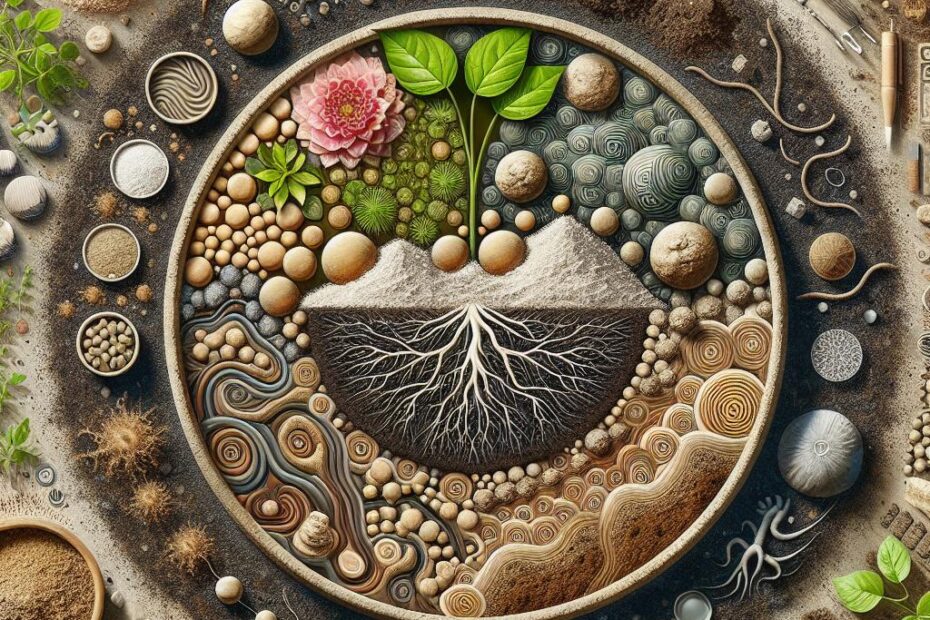Soil Amendments for Clay Drainage: Improving Your Garden’s Health
Introduction:
Clay soil can be a challenge for gardeners due to its poor drainage and compaction issues. However, there are several soil amendments that can help improve clay drainage and create a healthier growing environment for your plants. In this article, we will explore the best soil amendments for clay drainage, along with their benefits and practical tips for application.
Benefits of Soil Amendments for Clay Drainage:
- Improved soil structure: Soil amendments such as organic matter help improve soil structure by increasing aeration and water infiltration, reducing compaction issues commonly associated with clay soil.
- Enhanced nutrient availability: Soil amendments can also improve the availability of nutrients to plants by promoting microbial activity and nutrient retention in the soil.
- Better water drainage: By improving soil structure and promoting root growth, soil amendments can enhance water drainage in clay soil, preventing waterlogging and root rot.
- Increased plant vigor: Healthy, well-draining soil leads to stronger plant root systems and better overall plant health, resulting in increased vigor and productivity.
Best Soil Amendments for Clay Drainage:
- Organic matter: Adding compost, aged manure, or leaf mold to clay soil can significantly improve its structure and drainage. Organic matter helps break up clay particles, allowing for better air and water circulation.
- Gypsum: Gypsum is a natural mineral that can help improve clay soil drainage by breaking up compacted layers and reducing sodium content, which can cause soil crusting.
- Sand or gravel: Incorporating sand or gravel into clay soil can improve drainage by increasing porosity and promoting better water movement.
- Perlite or vermiculite: These lightweight materials can be mixed into clay soil to improve aeration, water retention, and drainage.
- Peat moss: Peat moss is a natural soil amendment that can help improve clay soil structure by increasing organic matter content and enhancing water retention.
Practical Tips for Applying Soil Amendments:
- Test your soil: Before adding any soil amendments, it’s important to test your soil to determine its pH and nutrient levels. This will help you choose the right amendments for your specific soil conditions.
- Mix amendments thoroughly: When incorporating soil amendments into clay soil, make sure to mix them thoroughly to ensure even distribution and maximum effectiveness.
- Apply amendments at the right time: It’s best to add soil amendments in the fall or spring when soil is workable and before planting to allow for proper incorporation and settling.
- Monitor plant health: After applying soil amendments, monitor your plants’ growth and health to ensure they are responding positively to the improved soil conditions.
- Consider long-term maintenance: Regularly adding organic matter and other soil amendments can help maintain healthy soil conditions and prevent compaction issues in the long run.
Case Study:
A homeowner in a clay-heavy area of the Midwest struggled with poor drainage and stunted plant growth in her garden. After adding organic matter in the form of compost and aged manure to her soil, she noticed a significant improvement in drainage and plant health. Her garden flourished with vibrant blooms and thriving vegetables, thanks to the soil amendments that transformed her clay soil into a healthy growing medium.
Conclusion:
In conclusion, soil amendments play a crucial role in improving clay drainage and creating a healthier growing environment for plants. By incorporating organic matter, gypsum, sand, perlite, or other soil amendments into clay soil, gardeners can enhance soil structure, promote better drainage, and increase overall plant vigor. With the right application techniques and regular maintenance, clay soil can be transformed into a fertile and productive garden bed. Experiment with different soil amendments to find the best combination for your specific soil conditions and watch your garden thrive with improved clay drainage.
